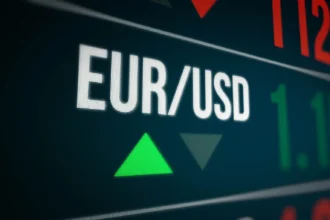Gold Prices Climb as Israel-Iran Conflict Fears Mount
Gold prices surged in early Asian trading on Wednesday, following alarming reports of a possible Israeli strike on Iran’s nuclear sites. The renewed geopolitical risk sent shockwaves through financial markets, increasing demand for traditional safe haven assets like gold and the Japanese yen.
According to a CNN report citing U.S. officials familiar with the intelligence, Israel appears to be in the advanced stages of planning a military strike targeting Iran’s nuclear infrastructure. Although no final decision has been made by Israeli leadership, recent military activities suggest that preparations are well underway.
This development comes amid already volatile global market conditions, further amplifying investor anxiety and pushing capital toward gold and other low-risk assets.
Spot Gold and Futures Rally on Haven Demand
Spot gold jumped 0.4% to $3,302.02 per ounce, while June gold futures climbed 0.6% to $3,303.62 per ounce by 00:57 ET (04:57 GMT). The uptrend reflects renewed investor interest in bullion as a hedge against geopolitical instability and financial uncertainty.
The rising tensions between Israel and Iran have far-reaching implications for regional and global stability. Any military confrontation between the two nations is expected to trigger a chain reaction, involving oil markets, currency valuations, and risk appetite across equities.
Middle East Tensions Reinforce Gold’s Safe Haven Status
The Middle East has long been a geopolitical flashpoint, and the latest developments underscore the fragile balance in the region. The potential for a military conflict between Israel and Iran could disrupt oil supplies, destabilize nearby countries, and draw in major global powers with vested interests.
The specter of such a scenario is enough to push investors toward gold – historically one of the most reliable safe haven assets. When geopolitical risks rise, gold tends to perform strongly as it offers a hedge against volatility and fiat currency fluctuations.
Additionally, the recent actions go against Washington’s push for diplomacy with Tehran, adding a layer of diplomatic strain between the U.S. and its key Middle East ally, Israel.
Weaker Dollar Adds Tailwind to Gold Rally
Beyond geopolitics, gold prices are also benefiting from a decline in the U.S. dollar. The dollar weakened after Moody’s downgraded the U.S. sovereign credit rating by one notch, citing excessive fiscal spending and a ballooning national debt.
This downgrade has spurred fresh concerns about the long-term sustainability of U.S. fiscal policy, further bolstering demand for gold.
Moreover, Federal Reserve officials have recently sounded alarms about increasing economic and trade uncertainties. While the Fed has maintained its stance against immediate interest rate cuts, investor confidence in the U.S. economy remains fragile.
Because gold is priced in dollars, a weaker greenback makes it cheaper for foreign buyers, thus increasing demand and pushing prices higher.
Technical Outlook: Gold Holds Strong Above $3,000
Gold remains comfortably above the $3,000/oz psychological level and is now less than $200 away from its all-time high set earlier this month. Technical charts suggest strong support near $3,250, while resistance levels are being eyed near the $3,350-$3,400 zone.
If tensions between Israel and Iran escalate further, gold could easily retest its record high, driven by a surge in safe haven flows.
Mixed Bag for Other Precious and Industrial Metals
While gold took center stage, the rest of the precious metals complex presented a mixed picture:
- Silver futures gained 0.2% to $33.255/oz, tracking gains in gold and benefiting from broader safe haven flows.
- Platinum futures fell 1% to $1,050.50/oz, showing some divergence likely due to industrial demand concerns.
In industrial metals:
- Copper futures rose 0.4% in both London and U.S. markets, trading at $9,559.25 per ton and $4.6928 per pound, respectively. Copper prices are responding positively to a weaker dollar and hopes of resilient global manufacturing demand.
Market Outlook: Volatility Likely to Persist
Investors should brace for continued market volatility as geopolitical and macroeconomic uncertainties collide. With the Israel-Iran situation evolving rapidly, headlines will likely drive short-term price movements across multiple asset classes.
Gold remains one of the few assets that investors can rely on during such periods. Until a clear resolution emerges, the yellow metal is expected to remain well-bid, especially if global risk sentiment continues to deteriorate.
Investment Insight: Should You Buy Gold Now?
Given the ongoing conflict risks and fiscal concerns in the U.S., gold is increasingly being viewed as an essential portfolio diversifier. For long-term investors, current levels still offer a compelling entry point, especially if geopolitical tensions worsen.
However, short-term traders should remain cautious, as gold can experience sharp pullbacks during high-volatility periods. Always manage risk and use stop-losses to protect capital.
Final Thoughts
The latest surge in gold prices reflects more than just temporary panic – it underscores growing investor concern over the global geopolitical landscape and economic stability. As conflict fears mount and the dollar weakens, gold is reclaiming its role as the ultimate safe haven.
Stay informed, diversify wisely, and consider gold not just as a trade, but as a strategic long-term asset in today’s increasingly uncertain world.
Frequently Asked Questions (FAQs)
Q1. Why are gold prices rising in 2025?
Gold prices are rising due to renewed safe haven demand fueled by geopolitical tensions, especially following reports of a potential Israeli strike on Iran’s nuclear facilities. A weaker U.S. dollar is also supporting gold prices.
Q2. How does geopolitical tension affect gold prices?
Geopolitical risks typically increase demand for gold as it is seen as a safe haven asset. Investors move funds to gold to protect against potential market volatility and economic instability.
Q3. What’s the outlook for gold if Israel strikes Iran?
If an Israeli strike on Iran occurs, gold prices could spike sharply due to panic buying, safe haven flows, and fears of broader Middle Eastern conflict.
Q4. Is now a good time to invest in gold?
With gold trading above $3,000/oz and global uncertainties mounting, it may be a good time to invest. However, assess your risk tolerance and portfolio needs before making decisions.
Q5. What other assets benefit during geopolitical crises?
Besides gold, the Japanese yen, U.S. Treasuries, and in some cases oil, tend to benefit from geopolitical instability as investors seek safety.
Q6. How is the U.S. dollar impacting gold prices?
A weaker dollar makes gold more affordable for non-U.S. investors, thereby boosting global demand and supporting higher prices.
Q7. Will the Federal Reserve cut interest rates soon?
Despite economic uncertainties, the Fed has indicated it will not cut interest rates immediately. This stance could change if growth slows or risks escalate further.
Q8. What is the current gold resistance level?
Technical analysis suggests strong resistance near the $3,350–$3,400 zone, with support holding around $3,250.
Q9. Are silver and platinum reacting the same way as gold?
Silver has seen modest gains, while platinum is underperforming, largely due to its industrial demand component.
Q10. How can I protect my portfolio in times of conflict?
Diversification into safe havens like gold, maintaining liquidity, and limiting exposure to high-risk assets can help protect your portfolio during geopolitical crises.
Q11. What’s the link between oil and gold prices?
Middle East conflict risks can drive oil prices up, which often has a spillover effect on gold as both assets react to inflation and geopolitical fears.
Q12. Should traders expect more volatility?
Yes, as long as the Israel-Iran conflict risk remains unresolved, markets will likely experience high volatility, especially in commodities and currency sectors.
Disclaimer
This article is for informational purposes only and does not constitute investment advice. Trading and investing in precious metals and commodities involve risks. Always do your own research or consult with a financial advisor before making investment decisions.



